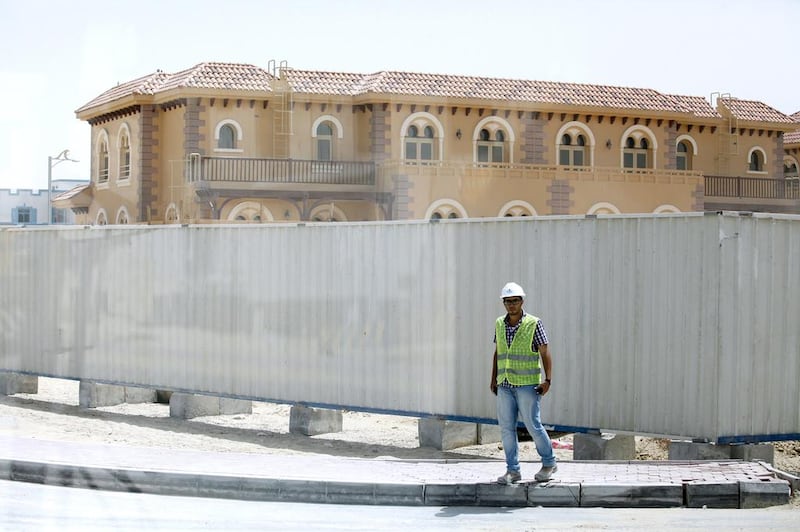Property developers in Dubai can build as many as 25,000 new homes a year without risking the sort of oversupply reached during the financial crisis, according to a new report.
With the population of the emirate rising by about 7 per cent a year, Citibank estimates that current levels of construction are in line with market fundamentals – meaning that the Dubai real estate market can absorb the extra flats and villas while still maintaining current vacancy rates.
But Citi researchers warned that with more mega-schemes planned, an increase in speculation and house prices rising by as much as 40 per cent last year, they were increasingly seeing parallels between Dubai’s current building boom and the previous boom, which eventually led to the devastating Dubai property crash that began in late 2008.
Citi’s findings reflect a widespread view that while the market’s fundamentals are sound, at some point a correction appears inevitable.
Craig Plumb, the head of research at Jones Lang LaSalle’s Dubai office, said last night: “We believe that prices will continue to increase this year but that there could be a price correction in either 2015 or 2016. The difficulty is getting the timing right, which is almost impossible, and predicting the magnitude of the correction.”
Citibank’s report said that the return of short-term housing speculators or so-called “flippers” suggested that speculative demand was back in the market, increasing the risk that “aggregate demand for property could once again far exceed real underlying end user demand”.
Added the report: “As Dubai’s property market booms and large-scale projects are announced, parallels are emerging with the property bubble that affected the emirate six years ago.
“If signs emerge that construction activity is responding to potential speculative demand in the real estate market, and that is leading to oversupply issues and rising corporate sector leverage, vulnerability to exogenous shocks is likely to creep back into Dubai’s economy.”
According to Citi’s research, using data from Jones Lang LaSalle and the Dubai Statistics Centre, vacancy rates for homes in Dubai peaked in 2010 at more than 20 per cent and had fallen to about 12 per cent this year.
The researchers predicted that given anticipated supply figures, the number of empty units would continue to fall, to about 8 per cent by 2020.
At the same time, while construction activity remains relatively subdued, the level of housing demand is predicted to rise in line with expected supply.
But with property developers working up plans for mega-projects including Meydan Group’s and Emaar’s 190,000 square metre Mohammed bin Rashid City and the Dubai World Central aerotropolis, Citi warned that Dubai risks another bout of oversupply.
Jones Lang LaSalle’s Mr Plumb said that when a correction comes, it is likely to be less harsh than the 2008 dive.
“Typically second cycles tend to be less dramatic as the first as people have learnt more and are more cautious. So while prices fell by as much as 60 per cent last time around we would expect any correction next time to be much less dramatic than that,” he noted.
lbarnard@thenational.ae
Follow us on Twitter @Ind_Insights





